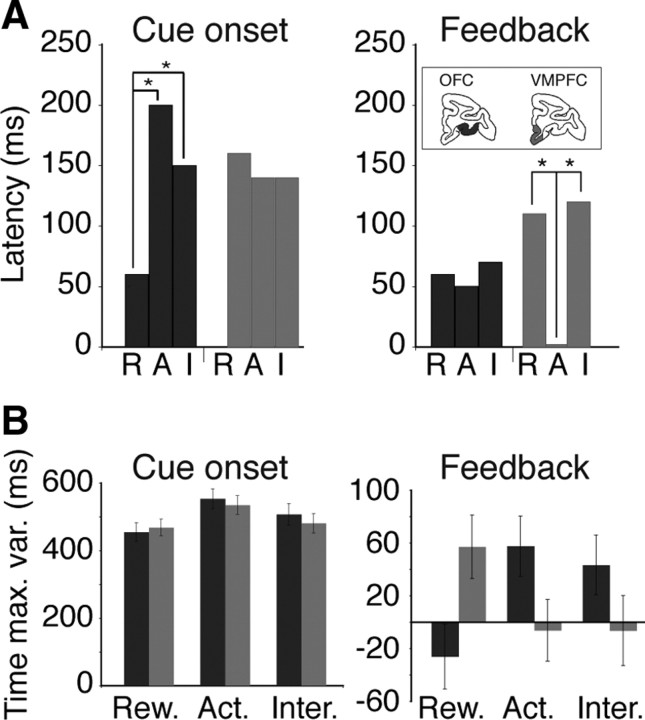Figure 9.
Latencies of responses to action, reward size, and their interaction. A, Median latency of responses to the factors reward size (R), action (A), and their interaction (I) in OFC (black) and VMPFC (gray). At cue onset, OFC neurons started to encode reward size significantly earlier than action and interaction (Wilcoxon test: p < 0.05). In VMPFC, latencies of the three effects were indistinguishable. At the feedback signal, VMPFC neurons started to encode action significantly earlier than reward size and interaction (Wilcoxon test: p < 0.05). In OFC, latencies of the three effects were indistinguishable. B, Time of maximum variance explained after cue onset (left) or around the feedback (right). The time of maximum variance explained of all neurons was analyzed using a two-way ANOVA with “type of effect” (three levels) and region (two levels) as factors. At cue onset, there was a significant effect of type of effect (F (2) = 4.3, p = 0.01) but no effect of region and no interaction (F < 0.5, p > 0.5). Neurons showed a maximum sensitivity to reward (Rew.) size before the effect of the action (Act.) factor peaked (Tukey test, p = 0.01). Around the feedback, there was no effect of type of effect or region factors (F < 0.5, p > 0.5), but their interaction (Inter.) was significant (F (2,690) = 6.5, p = 0.001). In VMPFC, the encoding of action peaked earlier than the encoding of reward size, whereas in OFC the encoding of reward size peaked before that of action.

